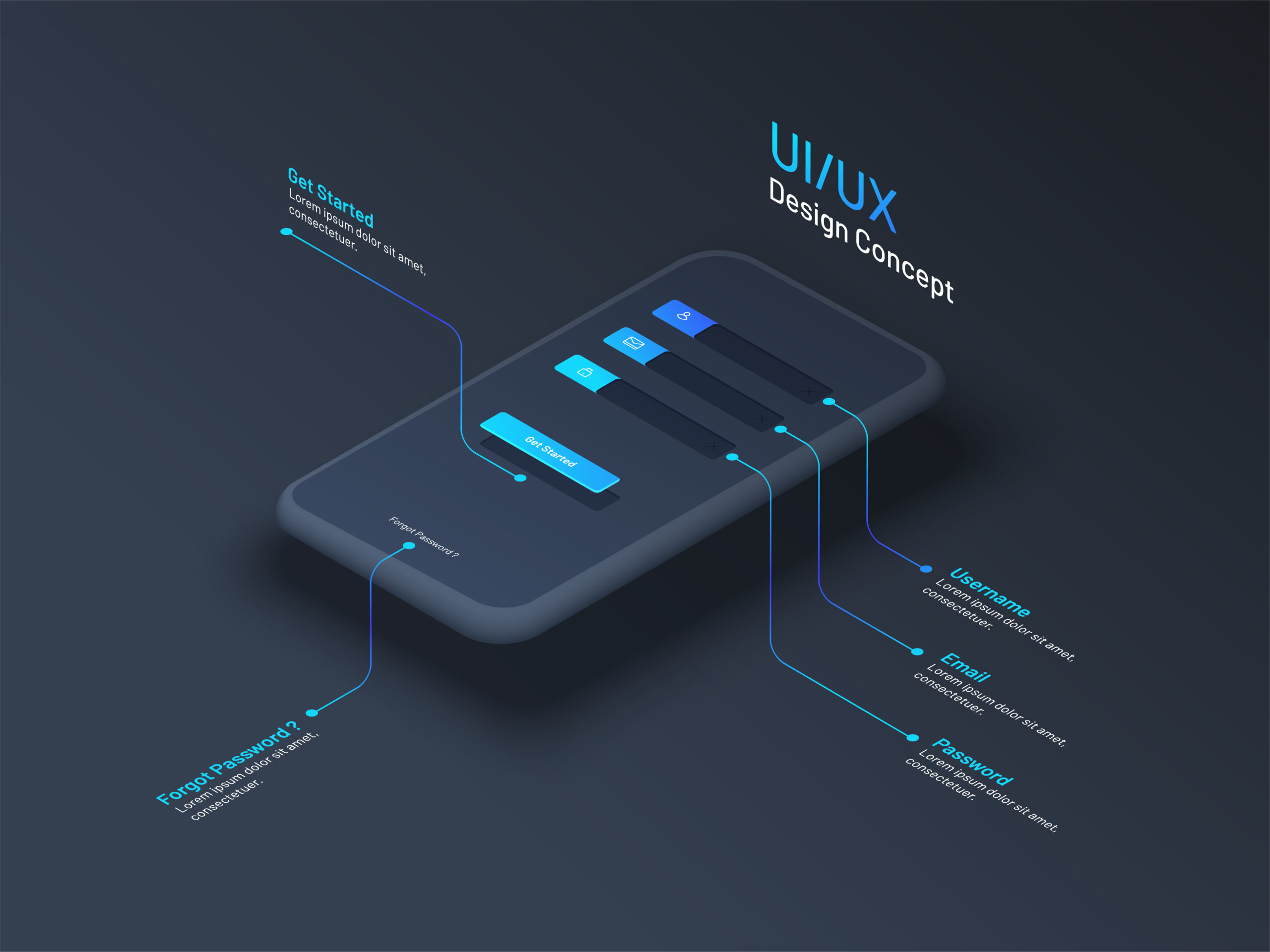The ROI Of UX: How Better Designs Create More Revenue
Estimated Reading Time:
Minutes

The ROI of UX is often dismissed as executives trying to get the biggest bang for their buck. But it’s the driving force behind businesses creating more intuitive experiences year after year.
In the highly competitive landscape of digital products, everyone knows they need to make a heck of an impression to stand out. UX design is pivotal in the success of a product, as a whopping 88% of users won’t return to a product after one bad interaction.
Beyond creating a good-looking interface that solves real-world problems, UX design is probably the most important investment a digital product creator makes! Understanding the Return on Investment (ROI) is imperative for both designers and stakeholders to justify design decisions, properly allocate resources, and secure the confidence of top executives.
What is ROI in UX Design?
The ROI of UX design refers to the measurable value that a well-crafted user experience can bring to a business. In the most basic terms, it’s how much money the business will make from their UX efforts compared to the amount they invested in the design project.
The overall return from UX isn't always set in stone and varies from project to project. For instance, if a small business hires a UX freelancer to redesign their website according to best practices, their return will probably be lower than a household-name app hiring an agency to fix their experience.
But an investment in UX isn’t just about the money. Instead, it manifests in improved user satisfaction, increased customer loyalty, and higher conversion rates (which, yes, leads to more revenue).
Think of a UX investment as an insurance policy for your product. You never know how your target audience will respond to your product when it launches, but the testing and data-validated solutions give you that little extra reassurance to know you’re covered.
To fully grasp the ROI of UX, we must first look beyond the surface and consider how user-centered design thinking impacts key performance indicators (KPIs).
Estimating ROI in UX Design
As we said earlier, the ROI of UX design is rarely a concrete number. From new accounts created to a drop in abandonment rates, several different factors influence the final total. A projected ROI is usually an estimate compared to how the current product (or a competitor) is performing.
How you measure your projected return from UX design directly correlates with how you measure your KPIs. Just like ROI, your KPIs may look different depending on the type of project. Here are some common KPIs to analyze when estimating the ROI of UX design:
User Engagement Metrics:
Conversion Rates: Measure the percentage of users who take a desired action, such as making a purchase or signing up for a newsletter, before and after UX improvements.
Bounce Rates: Analyze the percentage of visitors who navigate away from the site after viewing only one page. A decrease in bounce rates indicates improved engagement.
Customer Satisfaction:
Surveys and Feedback: Collect user feedback through surveys or direct communication. Positive feedback often correlates with increased customer satisfaction, leading to brand loyalty.
Task Success Rates:
Usability Testing: Evaluate how easily users can complete tasks on the platform. Higher task success rates indicate an improved user experience.
User Retention:
Churn Rates: Assess how many users stop using the product over time. A decrease in churn rates signifies improved user retention, which is crucial for sustained business growth.
Operational Efficiency:
Support Tickets: A reduction in support tickets can be indicative of improved usability and fewer user issues, leading to cost savings.
To establish your KPIs, choose the metrics that matter most to your business in the context of your UX design project. Then you can set a number or percentage of increased/decreased activity that indicates a successful project. That number will be the KPI the design team tracks after they launch the project.
To calculate the actual ROI of UX design, all you have to do is subtract the initial cost of the investment from its final value, then divide this new number by the cost of the investment, and finally, multiply it by 100.
So, yes…unfortunately you do need to do some math to estimate your projected and final ROI. But those numbers will act as a guiding light throughout the project, setting expectations for the design team, enhancing clarity, and securing buy-in from the appropriate stakeholders.

Why Stakeholders Need to Understand ROI in UX Design
Designers are normally more concerned with making innovative solutions that fit seamlessly into the end users’ lives. But if you ask stakeholders what the most important part of a digital product is, they’d say it’s their bottom line.
While creative types might not be too concerned about the bottom line, designers need to protect their jobs and keep improving on the digital products they create.
Securing the confidence of your stakeholders is paramount when kicking off a project — and one of the best ways to do that is to lean on your projected ROI. Demonstrating the ROI of UX design is essential for garnering support from decision-makers, ensuring that you can obtain the budget and resources needed to execute the product to your vision.
On top of your ROI estimate, these key benefits illustrate the impact of UX in digital products and paint a picture for investors:
Competitive Edge:
In today's competitive market, user experience can be a key differentiator. A well-designed product not only attracts new users but also keeps them loyal in the long run.
Cost Savings:
Investing in UX design upfront can lead to significant cost savings down the line. A user-friendly design reduces the need for extensive customer support, lowering operational costs.
Revenue Growth:
Improving user satisfaction and engagement directly impacts revenue. Higher conversion rates, increased customer loyalty, and positive word-of-mouth can drive substantial business growth.
Brand Reputation:
A positive user experience contributes to a positive brand image. Satisfied users are more likely to become brand advocates, influencing others to choose your product over competitors.
Adaptability to Change:
UX design isn't a one-time effort; it's an ongoing process that adapts to user needs and technological advancements. A design-focused approach allows businesses to stay agile in a rapidly changing landscape while still managing day-to-day workflows.

Communicating The ROI Of UX Design To Stakeholders
Now that we understand how important the ROI of UX design is in the grand scheme of things, all you have to do now is present the projected number to stakeholders, right? Well, yes and no.
The numbers are impactful and persuasive on their own. However, providing a rationale behind the ROI can help illustrate your action plan for the project. By showing key decision-makers your mindset for executing each task, they’ll feel more confident handing over the reins and letting the design team do what they do best.
Align with Business Goals:
Clearly demonstrate how UX improvements align with overarching business objectives. Whether it's increasing revenue, reducing costs, or expanding market share, tie UX metrics to strategic goals.
Use Tangible Metrics:
Translate design improvements into metrics that matter to stakeholders. Instead of focusing solely on design elements, emphasize how those elements contribute to increased conversion rates, customer retention, or other KPIs.
Create Before-and-After Scenarios:
Develop case studies or presentations that showcase the impact of UX design changes. Use visuals to illustrate the user journey before and after improvements, highlighting positive outcomes.
Quantify Financial Benefits:
Do your research and convert UX metrics into potential financial gains. For example, if a design change leads to a 10% increase in conversion rates, calculate the additional revenue generated and present it in a clear and concise manner.
User Stories and Testimonials:
Incorporate user stories and testimonials to add a human touch to the data. Real-life examples of how users benefited from improved UX can resonate more strongly with stakeholders.

ROI Matters, Now And Forever
The more digital products that are launched onto the market, the higher user expectations will be. So investing in UX design is more than a creative choice — it’s a strategic one.
Understanding and communicating the ROI of UX design is the bridge between creative teams and executives. Ultimately, we all have the best intentions for the product at heart. But by establishing KPIs and using them to project ROI, each department can get on the same page and support UX efforts long-term.
By aligning design improvements with tangible metrics and demonstrating the long-term impact on the business, designers can secure the support and investment needed to create exceptional user experiences, impactful brands, and company longevity.
Need a real-world example of ROI to gain stakeholder confidence? Read all about our SchoolMessenger redesign in TechBehemoths and start a low-risk, high-return project with us today!
Share:
Let’s Work Together!
It’s a jungle out there — let the Create Ape experts help you traverse the wilds as we take your project to new heights.











.jpg)
































.png)
















.jpeg)










.png)






















